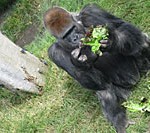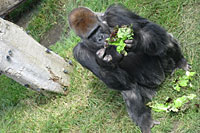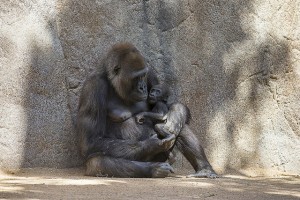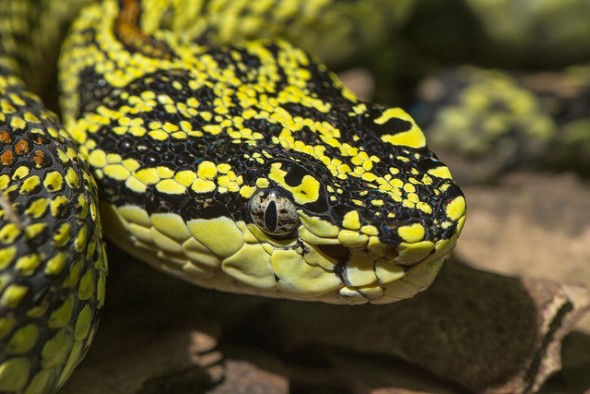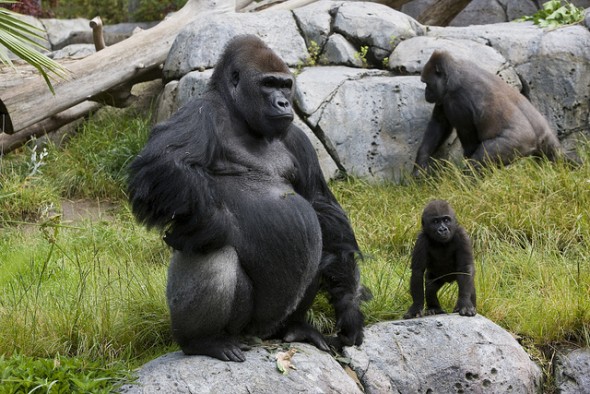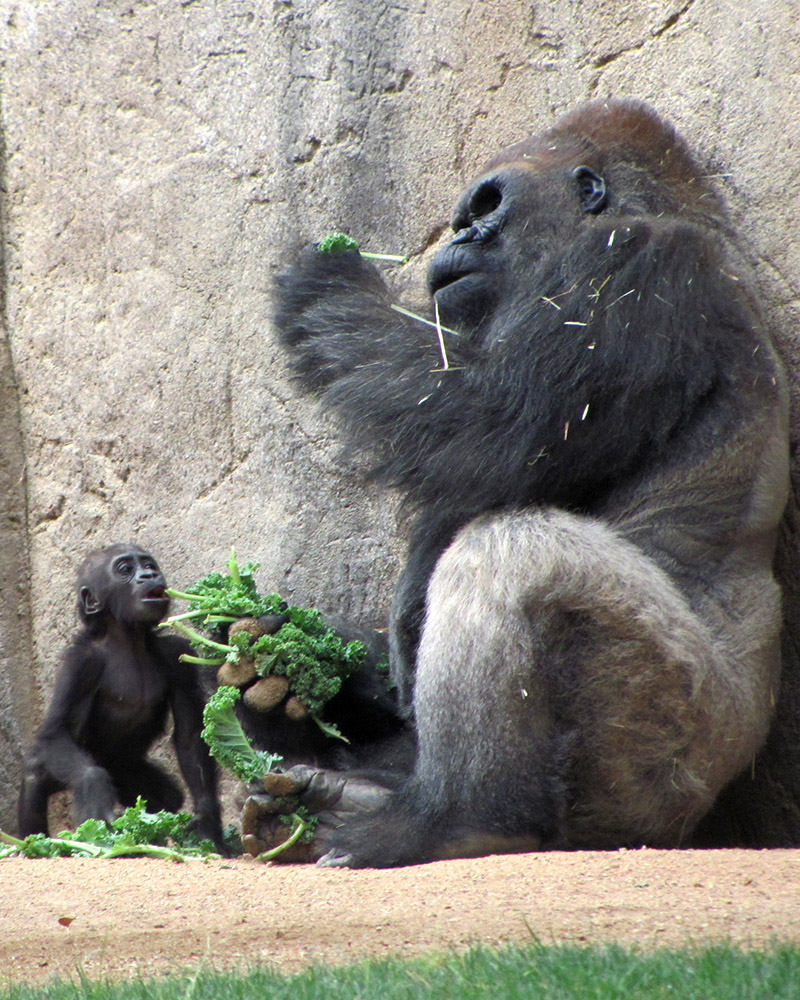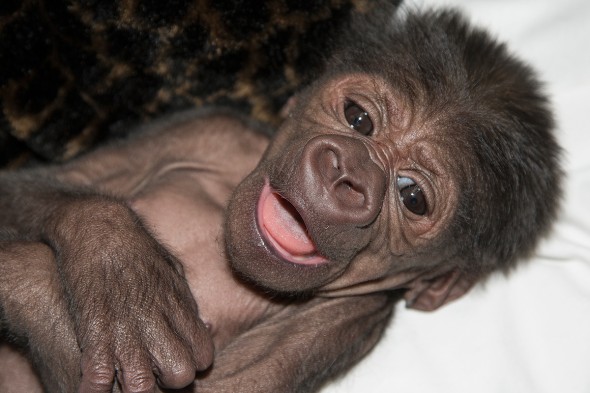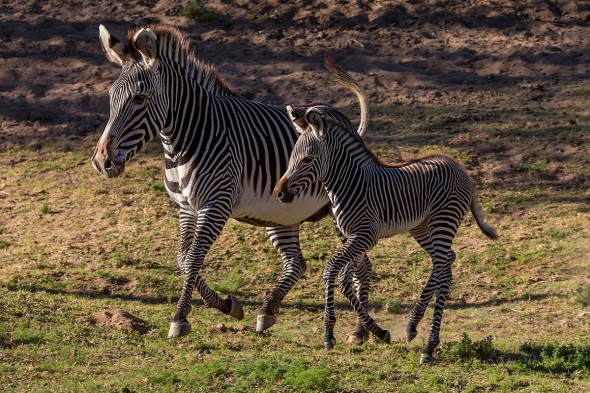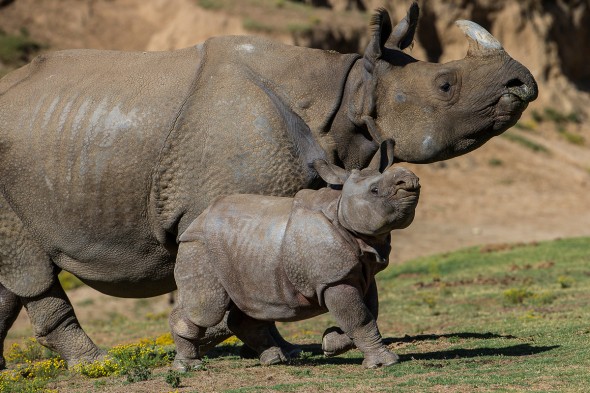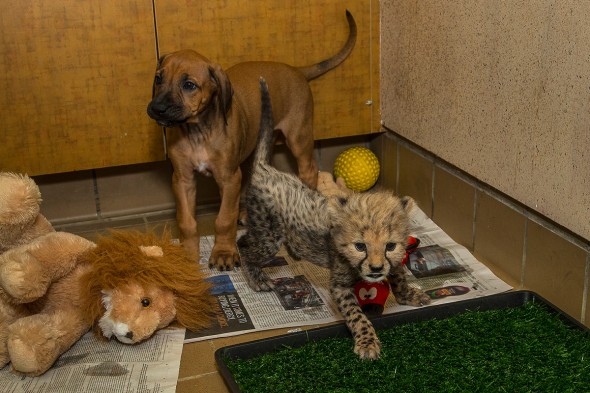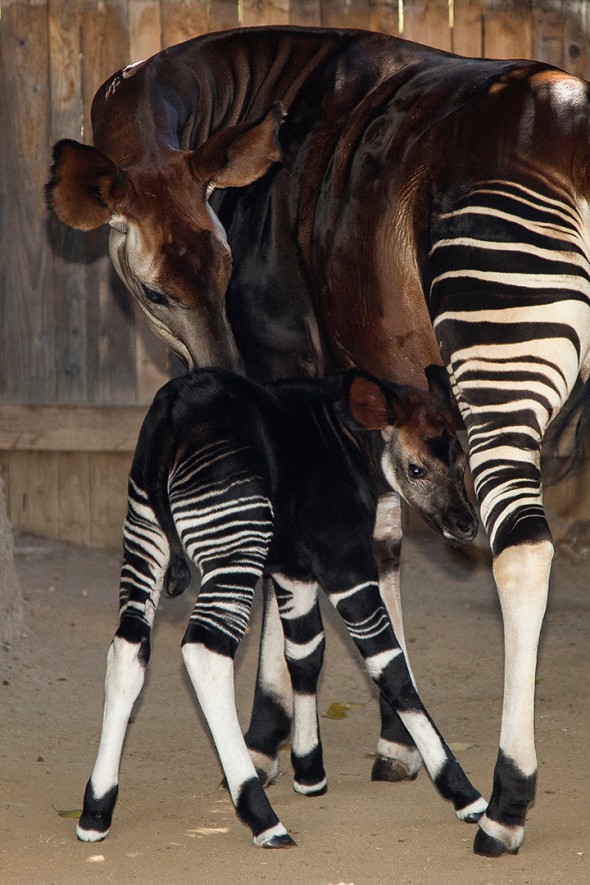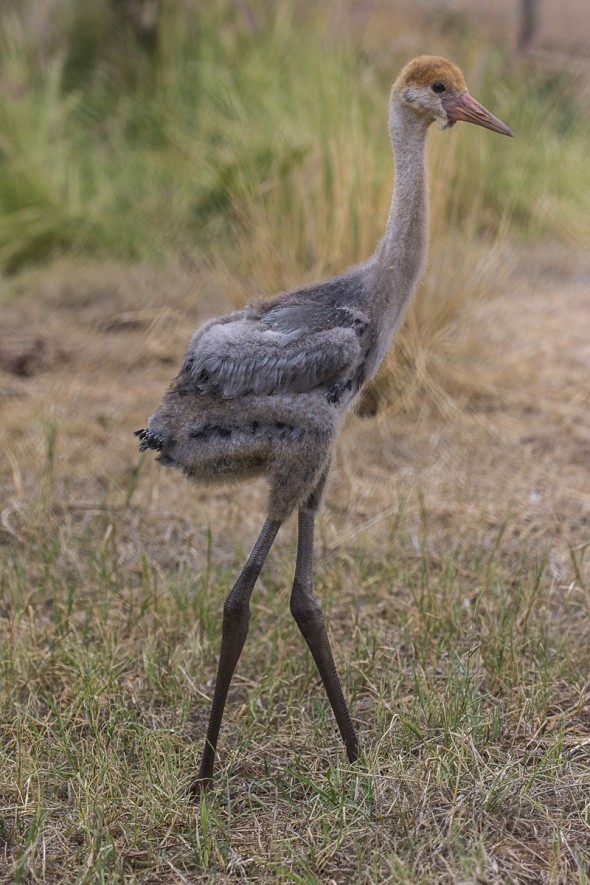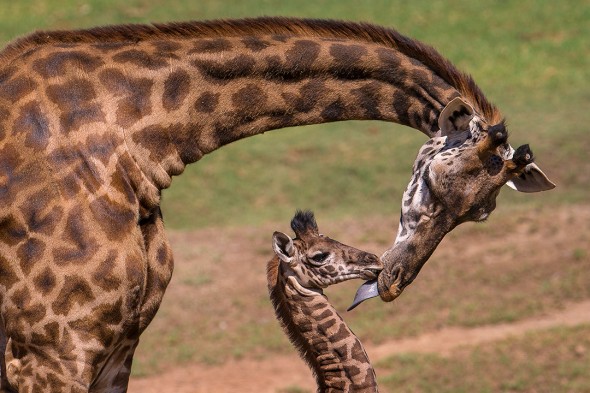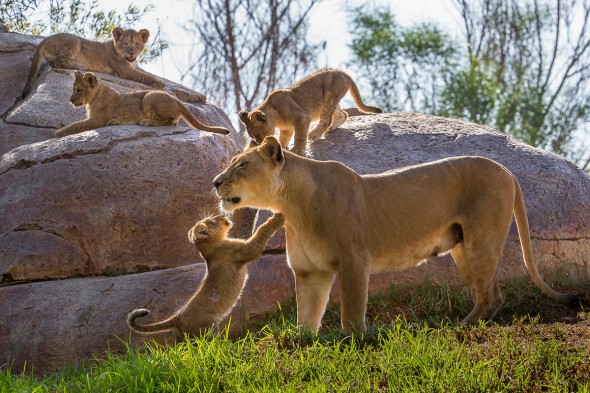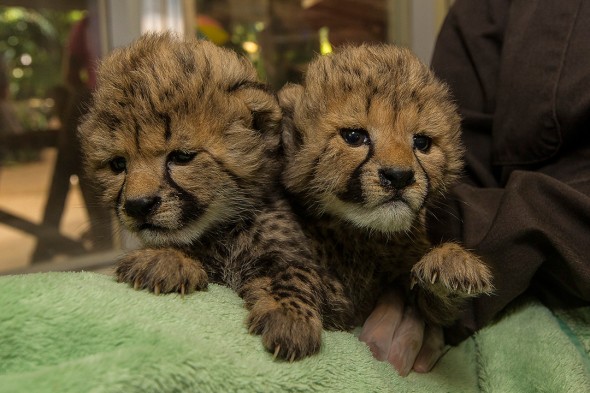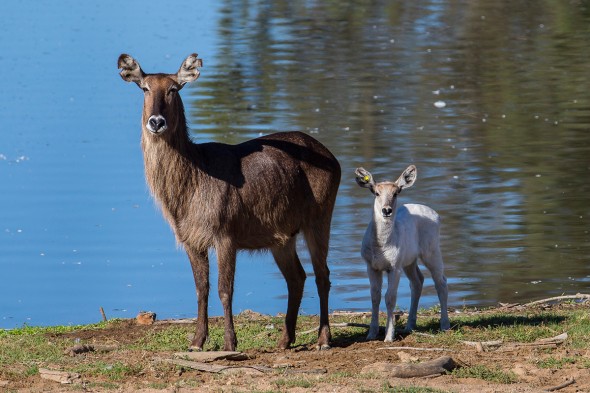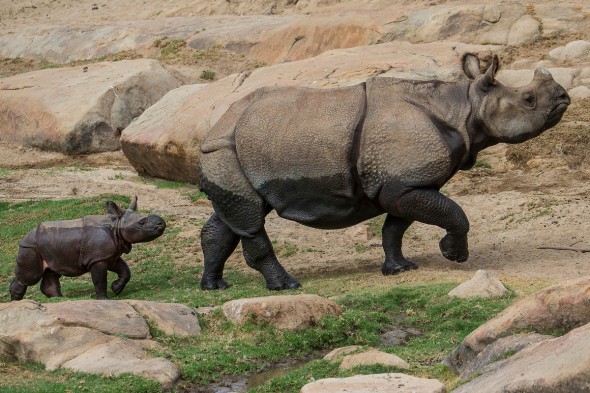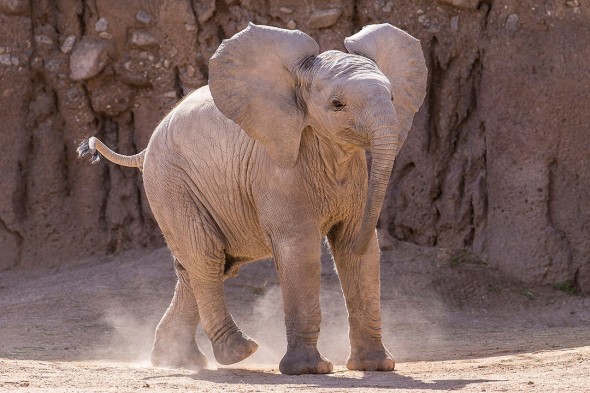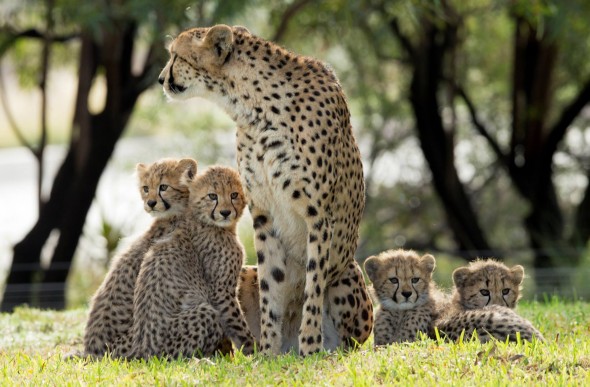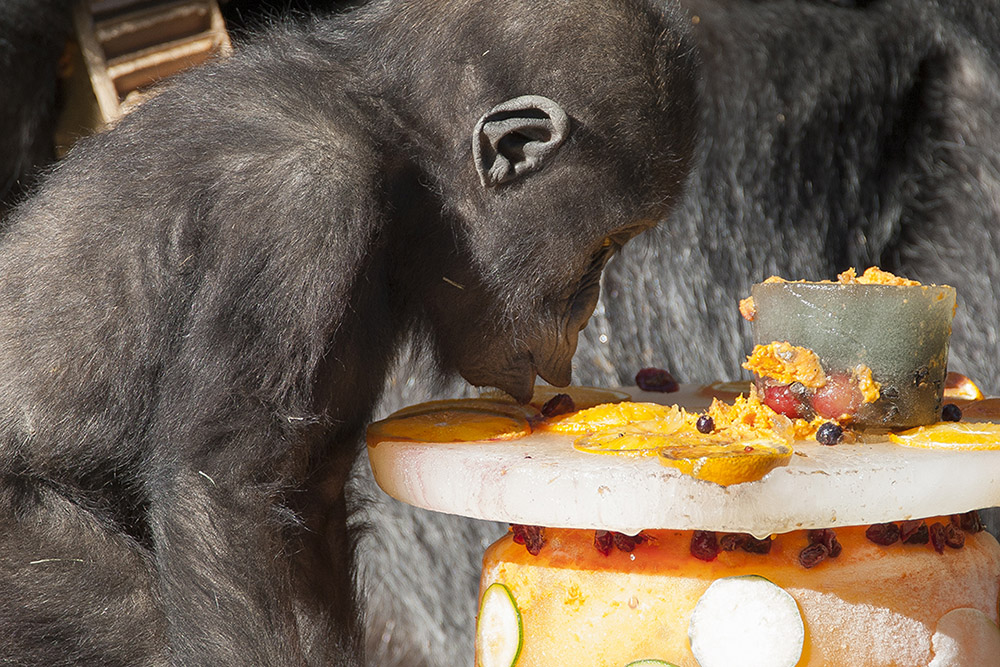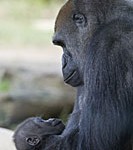
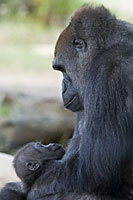
Instead of bringing Frank to the Zoo’s nursery facility, we decided to set up a satellite nursery inside the gorilla building close to Azizi so that the two would maintain as much contact as possible. Rather than hand rearing this infant as we have done with previous gorilla infants needing assistance, we decided to try a “rear assisting” program, letting Azizi raise Frank while we simply helped her. Nursery and mammal keepers would work together to provide support for Azizi until she could take over full time.
For the first five days, Frank needed to be housed inside an incubator to maintain his body temperature. After that, we set up a crib and a play area in the hallway where Frank could see and hear his family and they would be constantly aware of him, too. As humans, we do not fully understand all the information that is transmitted from mother or family member to the infant gorilla in the first days and weeks of life. There are no doubt many important lessons that an infant gorilla would miss if reared by humans. As much as we could, we were determined to let the gorillas raise Frank so that he could fully benefit from their care.
Frank was a strong baby, and he ate and gained weight well. Because we were so confident with Azizi’s early maternal care, we were able to give Frank back to her earlier than we have with previous gorilla infants cared for in our nursery. On day 16, we gave Azizi a chance to hold Frank. She was a bit clumsy at first, but little Frank was held and surrounded by his gorilla family.
Each week we increased the time that Frank stayed with his family. Highly intelligent, he soon learned to come into a small room for his bottle feedings. Now it wasn’t only Azizi who was enjoying the new addition to the gorilla group, as the other two adult females were gradually allowed to hold and play with Frank. Both 13-year-old Imani and 14-year-old Ndjia were excited to get a chance to interact with him. Frank’s dance card was full as all three females vied for his attention. Even Frank’s father, Paul Donn, allowed Frank to approach. A gentle (though huge) finger was always extended as a greeting. By 5½ months of age, little Frank was spending all night with the gorillas and was reliably coming to animal care staff for bottle feedings.
Keepers gradually introduced Frank to the huge, lush exhibit at the Zoo’s Gorilla Tropics so that he would be comfortable in the area. On the morning of March 6, 2009, Frank made his exhibit debut with his family. It was his aunt, Imani, who carried Frank outside into the exhibit for the first time. Frank was relaxed as he explored the exhibit or was carried about by his trio of eager gorilla “mothers.”
One might never guess that this confident little six-month-old gorilla was rear-assisted by a dedicated staff of animal services personnel who had his best interests at heart. We could never have accomplished such a successful project without an awesome and gentle family of gorillas to give him back to.
Janet Hawes is a senior keeper at the San Diego Zoo.
Watch video of Frank’s first day on exhibit with his family
See more photos of Frank in What’s New?







 Vila has long been a favorite of visitors and staff at the San Diego Zoo’s Wild Animal Park. She is one of the three oldest known gorillas living today, and we had a birthday party for her on Wednesday, October 28. We wrapped presents full of fruit, nuts, and seeds for the entire troop, and Vila enjoyed a peanut-butter frosted banana ice cake topped with carrot “candles.” The gorilla exhibit was decorated with flowers, ginger leaves, colorful streamers, and “Happy Birthday” signs stuck to rocks with peanut butter.
Vila has long been a favorite of visitors and staff at the San Diego Zoo’s Wild Animal Park. She is one of the three oldest known gorillas living today, and we had a birthday party for her on Wednesday, October 28. We wrapped presents full of fruit, nuts, and seeds for the entire troop, and Vila enjoyed a peanut-butter frosted banana ice cake topped with carrot “candles.” The gorilla exhibit was decorated with flowers, ginger leaves, colorful streamers, and “Happy Birthday” signs stuck to rocks with peanut butter.  Although she is “up there” in age, Vila is in excellent health, has a good appetite, and normal behavior. She does have some age-related issues, so she does get senior vitamins and medicine for arthritis, which works well: she has no trouble getting around.
Although she is “up there” in age, Vila is in excellent health, has a good appetite, and normal behavior. She does have some age-related issues, so she does get senior vitamins and medicine for arthritis, which works well: she has no trouble getting around. When Vila goes on exhibit in the morning, we always say she looks like a powdered donut because bits of hay always stick to her! She likes to play with or cover herself in whatever she can find inside (hay, excelsior, paper towels) and it shows. For some reason, these items don’t stick to the other gorillas with quite the same grip!
When Vila goes on exhibit in the morning, we always say she looks like a powdered donut because bits of hay always stick to her! She likes to play with or cover herself in whatever she can find inside (hay, excelsior, paper towels) and it shows. For some reason, these items don’t stick to the other gorillas with quite the same grip!


